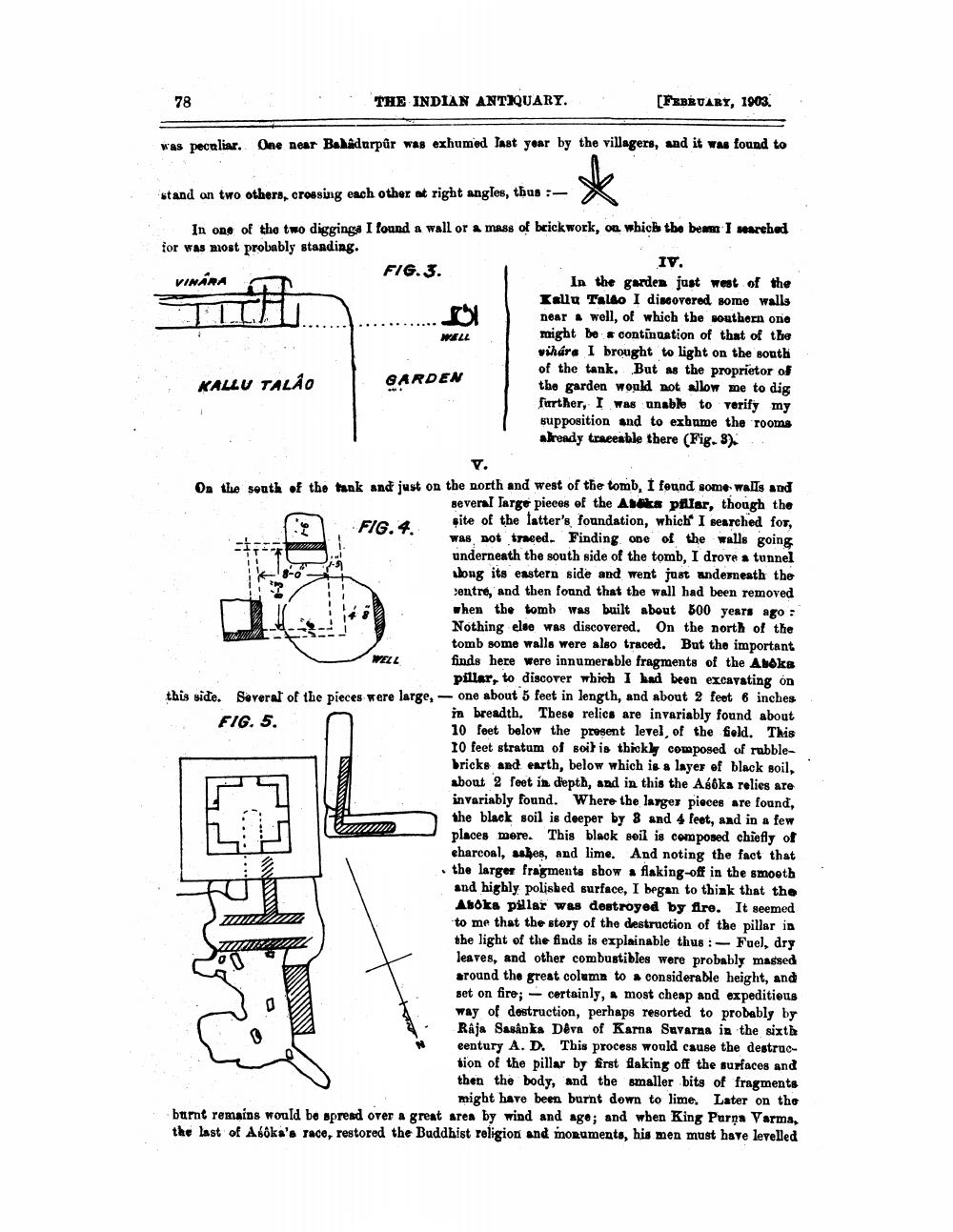________________
78
THE INDIAN ANTIQUARY.
was peculiar. One near Bahadurpur was exhumed last year by the villagers, and it was found to
*
KALLU TALÃO
stand on two others, crossing each other at right angles, thus:
In one of the two diggings I found a wall or a mass of brickwork, on which the beam I searched for was most probably standing.
VINÁRA
0
FIG. 3.
KQT
[FEBRUARY, 1903.
WELL
GARDEN
WELL
T.
2
FIG. 4.
On the south of the tank and just on the north and west of the tomb, I found some walls and several large pieces of the Abaks pillar, though the site of the latter's foundation, which I searched for, was not traced. Finding one of the walls going underneath the south side of the tomb, I drove a tunnel along its eastern side and went just underneath the centre, and then found that the wall had been removed when the tomb was built about 500 years ago: Nothing else was discovered. On the north of the tomb some walls were also traced. But the important finds here were innumerable fragments of the Aboks pillar, to discover which I had been excavating on
FIG. 5.
this side. Several of the pieces were large, one about 5 feet in length, and about 2 feet 6 inches in breadth. These relics are invariably found about 10 feet below the present level, of the field. This 10 feet stratum of soil is thickly composed of rubblebricks and earth, below which is a layer of black soil, about 2 feet in depth, and in this the Asôka relies are invariably found. Where the larger pieces are found, the black soil is deeper by 3 and 4 feet, and in a few places mere. This black soil is composed chiefly of eharcoal, ashes, and lime. And noting the fact that the larger fragments show a flaking-off in the smooth and highly polished surface, I began to think that the Asoka pillar was destroyed by fire. It seemed to me that the story of the destruction of the pillar in the light of the finds is explainable thus: Fuel, dry leaves, and other combustibles were probably massed around the great column to a considerable height, and set on fire; certainly, a most cheap and expeditious way of destruction, perhaps resorted to probably by Raja Sasanka Dêva of Karna Suvarna in the sixth eentury A. D. This process would cause the destruction of the pillar by first flaking off the surfaces and then the body, and the smaller bits of fragments might have been burnt down to lime. Later on the
IV.
In the garden just west of the Kallu Talão I discovered some walls near a well, of which the southern one might be a continuation of that of the vihára I brought to light on the south of the tank. But as the proprietor of the garden would not allow me to dig farther, I was unable to verify my supposition and to exhume the rooms already traceable there (Fig. 3).
burnt remains would be spread over a great area by wind and age; and when King Purna Varma,
the last of Asoka's race, restored the Buddhist religion and monuments, his men must have levelled




